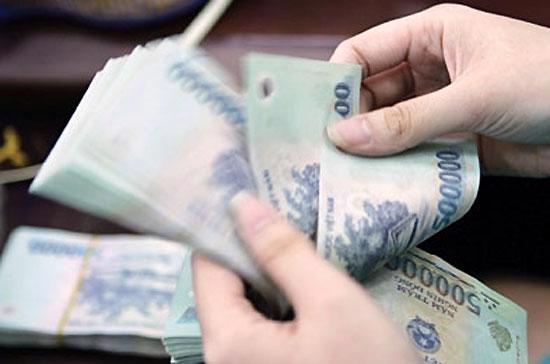Economists and experts told the “Vietnam Credit Spotlight 2025” conference held by S&P Global Ratings and FiinRatings in Hanoi on February 27 that maintaining sustainable growth and ensuring financial market stability are not only urgent requirements amid the ongoing global economic volatility but are also essential foundations for Vietnam’s long-term development goals.
The government has set a target of 8 per cent GDP growth in 2025, laying the foundation for double-digit growth between 2026 and 2030. Given that Vietnam’s economy remains heavily reliant upon the banking system for capital, the allocation of credit will play a critical role. To achieve growth of 8 per cent or more, credit growth must reach at least 16 per cent, equivalent to an additional VND2,500 trillion ($100 billion) in new capital this year. The key question is: Which sectors should this amount be directed towards to ensure inflation is controlled and bad debts managed?
Concerns about capital absorption
Mr. Louis Kuijs, Chief Economist for Asia Pacific at S&P Global Ratings, noted that during his years working in Asian economies he has observed that credit growth does not always go hand-in-hand with inflation. What matters most is how credit is allocated and its overall quality.
Experts believe that as Vietnam enters 2025, its economy faces multiple challenges despite signs of recovery in 2024. The economic outlook for this year presents a mixed picture, with both growth drivers and headwinds. While several industries continue to expand, exports may come under pressure due to global economic uncertainties.
One major concern is the risk of a global economic slowdown driven by escalating geopolitical tensions, particularly the prospect of a “Trump 2.0” administration with stricter tariff policies. The restructuring of international trade relationships, coupled with the US Federal Reserve (Fed)’s slower-than-expected rate cuts, could significantly impact Vietnam’s key export markets, including the US, Japan, China, and Europe.
Additionally, exchange rate fluctuations and Vietnam’s foreign exchange reserves, now at their lowest level in five years, could put pressure on monetary policy, especially during periods of high foreign currency demand. This may affect corporate profitability as inflationary and interest rate pressures continue to rise. These challenges could negatively impact the capital absorption capacity of businesses in the manufacturing sector.
However, there are also notable bright spots. Vietnam maintains a relatively low public debt-to-GDP ratio, estimated at around 37 per cent in 2024. The government is actively steering the economy by boosting public investment, advancing institutional reforms, and attracting FDI into high-tech industries. In 2025, the government plans to allocate VND870 trillion ($34.8 billion) to public investment while addressing legal bottlenecks to unlock the real estate market.
Analysts expect these measures to help restore confidence in the private sector, driving investment and consumption growth in the time ahead.
Real estate companies facing risks
Mr. Ivan Tan, Director of Financial Institution Ratings at S&P Global Ratings, forecasts that with the government’s efforts to improve the regulatory framework for businesses, the real estate and corporate bond markets could see a recovery in 2025. Long-term reforms, such as amendments to the Land Law 2024, are expected to stimulate real estate activity, positively impacting asset quality and expanding bank balance sheets. However, he noted that Vietnam remains a market characterized by highly-cyclical credit growth and asset prices, posing unique risks to the banking system.
While Vietnam’s macro-economy maintains positive momentum, Mr. Xavier Jean, Managing Director of Corporate Ratings at S&P Global Ratings, told the conference, real estate companies around the country will face increasing challenges in posting sustainable revenue growth and profit margins in the years to come. Previously, many real estate companies prioritized market expansion over profit optimization, taking advantage of low capital costs. However, intensifying competition and trade uncertainties could add pressure to business operations.
The financial leverage of Vietnamese real estate companies remains moderate overall but has risen rapidly among large corporations, particularly multi-industry conglomerates. “The growing divergence in credit quality makes larger companies more vulnerable to economic shocks, refinancing risks, and shifts in market sentiment,” he said. “If a financial crisis were to hit a major conglomerate, contagion risks could spread across the corporate sector and banking system, similar to the real estate crisis of 2021-2023.”
According to S&P Global Ratings experts, local real estate companies still face higher refinancing risks than their regional counterparts. Their heavy reliance on short-term debt makes them more susceptible to liquidity fluctuations, while the domestic bond market remains underdeveloped and access to foreign capital is hindered by multiple barriers.
Banking sector prospects
Mr. Nguyen Anh Quan, Senior Manager in Charge of Financial Institution Ratings at FiinRatings, said Vietnam’s banking regulatory policies in 2025 will focus on two main priorities. First, promoting credit growth to stimulate the economy and ensuring capital flows into priority sectors, and second, enhancing risk management by tightening the regulatory framework and guiding banks in controlling credit risks related to guarantees and off-balance sheet commitments.
Additionally, certain policies allowing loan restructuring in specific cases will help reduce the sector’s bad debt ratio. However, the decision not to extend Circular No. 02/2023/TT-NHNN dated April 23, 2023, also reflects the government’s efforts to improve transparency in the banking system. However, Mr. Quan cautioned that overly rapid loan growth could increase pressure on asset quality, which has shown no significant improvement in recent quarters.
“One major concern is that many banks still have thin capital buffers,” said Mr. Ketut Ariadi Kusuma, Senior Financial Sector Specialist at the World Bank, while recommending that both the government and commercial banks adopt measures early to address this issue.
In the near term, experts predict that, in 2025, commercial banks may continue paying dividends in shares rather than cash to maintain internal capital sources for credit growth. Mr. Tan noted that S&P Global Ratings assesses the overall outlook for Vietnam’s banking system in 2025 as stable, but with clear differentiation. Large joint stock commercial banks and State-controlled banks are expected to maintain their leadership in profitability and financial strength, while smaller banks will face challenges related to capital and asset quality.
"We forecast that the second half of 2025 will be a crucial period, with the retail sector expected to see significant improvements and the real estate market entering into a new phase in its recovery cycle. Supported by the government’s growth policies, we believe the banking sector can maintain stability in the immediate future. As a result, similar to previous years, many banks may exceed the 16 per cent credit growth target in 2025."
Mr. Nguyen Anh Quan, Analyst and Manager of Financial Sector Ratings, FiinRatings.









 Google translate
Google translate